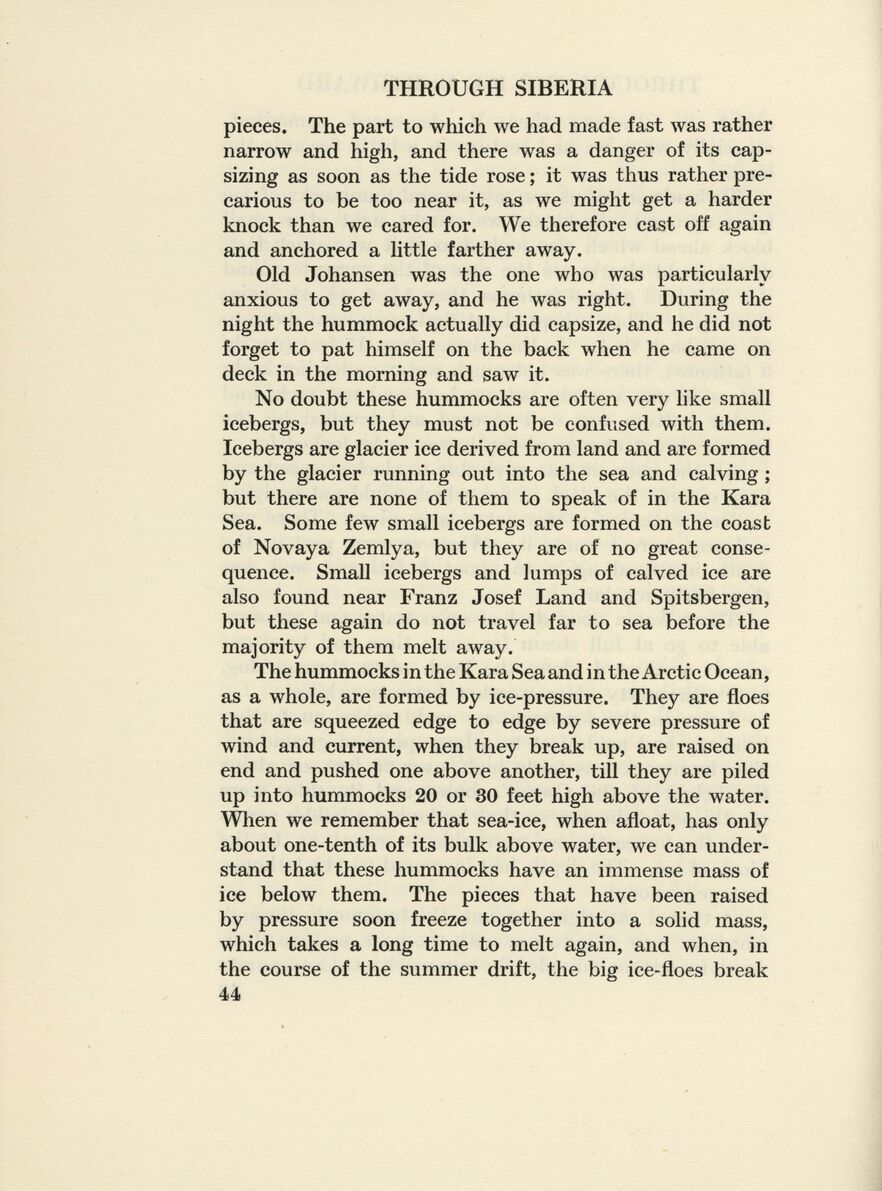
Full resolution (JPEG) - On this page / på denna sida - III. Through the ice northward along Yamal

<< prev. page << föreg. sida << >> nästa sida >> next page >>
Below is the raw OCR text
from the above scanned image.
Do you see an error? Proofread the page now!
Här nedan syns maskintolkade texten från faksimilbilden ovan.
Ser du något fel? Korrekturläs sidan nu!
This page has never been proofread. / Denna sida har aldrig korrekturlästs.
THROUGH SIBERIA
pieces. The part to which we had made fast was rather
narrow and high, and there was a danger of its cap
sizing as soon as the tide rose ; it was thus rather pre
carious to be too near it, as we might get a harder
knock than we cared for. We therefore east off again
and anchored a little farther away.
Old Johansen was the one who was particularly
anxious to get away, and he was right. During the
night the hummock actually did capsize, and he did not
forget to pat himself on the back when he came on
deck in the morning and saw it.
No doubt these hummocks are often very like small
icebergs, but they must not be confused with them.
Icebergs are glacier ice derived from land and are formed
by the glacier running out into the sea and calving ;
but there are none of them to speak of in the Kara
Sea. Some few small icebergs are formed on the coast
of Novaya Zemlya, but they are of no great conse
quence. Small icebergs and lumps of calved ice are
also found near Franz Josef Land and Spitsbergen,
but these again do not travel far to sea before the
majority of them melt away.
The hummocks in the Kara Sea and intheArctic Ocean,
as a whole, are formed by ice-pressure. They are floes
that are squeezed edge to edge by severe pressure of
wind and current, when they break up, are raised on
end and pushed one above another, till they are piled
up into hummocks 20 or 30 feet high above the water.
When we remember that sea-ice, when afloat, has only
about one-tenth of its bulk above water, we can under
stand that these hummocks have an immense mass of
ice below them. The pieces that have been raised
by pressure soon freeze together into a solid mass,
which takes a long time to melt again, and when, in
the course of the summer drift, the big ice-floes break
44
<< prev. page << föreg. sida << >> nästa sida >> next page >>